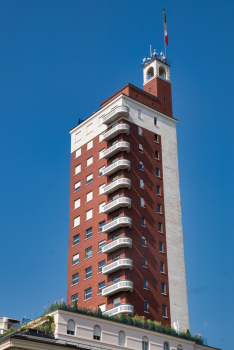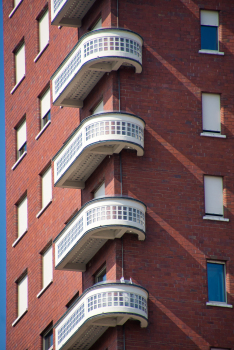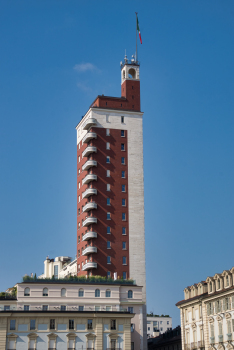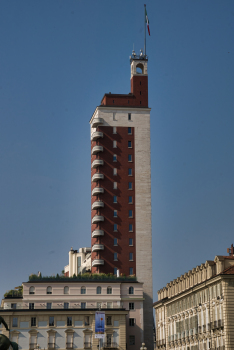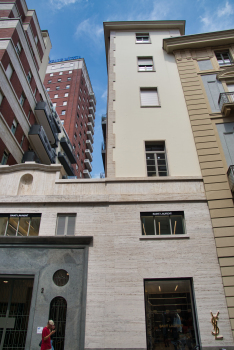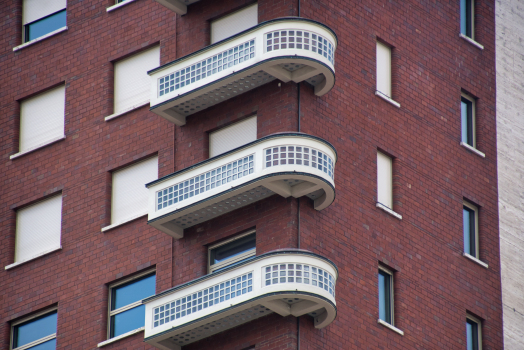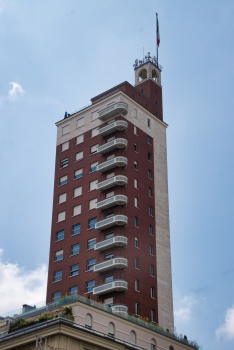General Information
| Other name(s): | Torre Littoria |
|---|---|
| Completion: | 1933 |
| Status: | in use |
Project Type
| Function / usage: |
Office building |
|---|
Location
Technical Information
Dimensions
| height | 109 m | |
| number of floors (above ground) | 21 |
Excerpt from Wikipedia
Torre Littoria, or Grattacielo Reale Mutua, is the first high-rise building in Turin, and one of the most renowned rationalist buildings in Italy. It is located in the city centre, on Via Giovanni Battista Viotti, near Piazza Castello.
Torre Littoria was built in 1933-34, with the intent of hosting, among other offices, the national headquarters of the National Fascist Party; in fact it never did, with the party's headquarters located first in Milan and then in Rome. Instead it became wholly owned by Reale Mutua Assicurazioni (Royal Mutual Association), an insurance company that already financed almost all of ist costs and is still the owner of the entire property.
The building is a prominent example of early 20th-century Italian rationalist architecture, notable for ist widespread use of innovative materials such as glass brick, clinker brick and linoleum, and is also the first Italian building with a welded metal structural frame.
The building occupies a little more than two-thirds of a city block, consisting of a 9-storey low-rise section, and a 19-storey high-rise section reaching 87 metres at ist roof, upon which rises an antenna tower, giving the building a total height of 109 metres; until 1940 it was the tallest continuously habitable building in Italy. During World War II ist roof mounted one of the 58 air raid sirens in Turin, and the building sustained minor damage during the bombing of 13 July 1943.
The height of the building, in proximity to the Royal Palace of Turin, was regarded as a statement of Fascist dominance over the Italian Royal House of Savoy, and over the years the building has been derided as "an eyesore", "the finger of Duce", "the mobile phone" and "the arrogant tower".
Text imported from Wikipedia article "Torre Littoria" and modified on 23 July 2019 under the CC-BY-SA 3.0 license.
Participants
- Gio Ponti (architect)
- Ettore Ferrari (architect)
- Cesare Chiodi (architect)
Relevant Web Sites
Relevant Publications
- La Tour Littoria, le nouveau gratte-ciel de Turin. In: Ossature métallique, v. 5 (April 1936), pp. 161-168.
- About this
data sheet - Structure-ID
20024272 - Published on:
26/10/2006 - Last updated on:
26/08/2021

